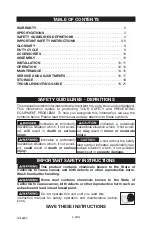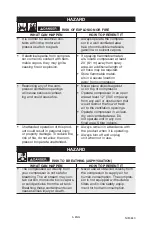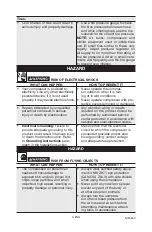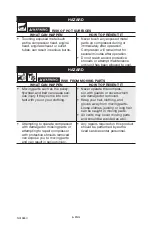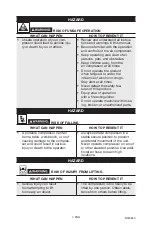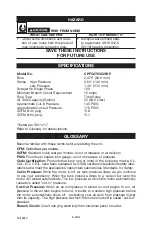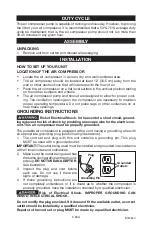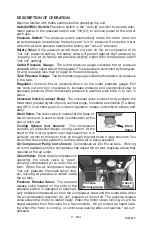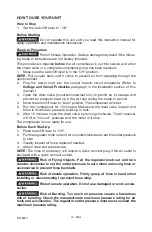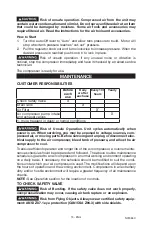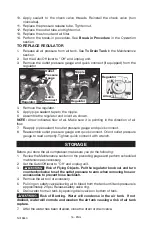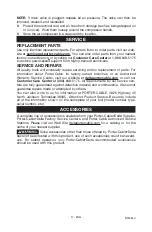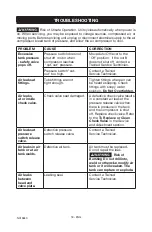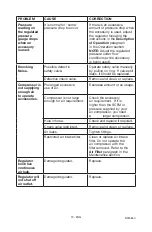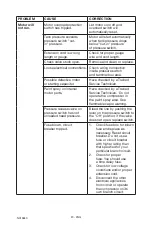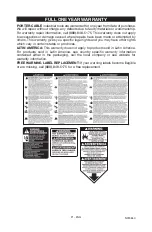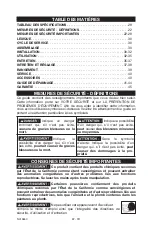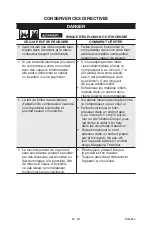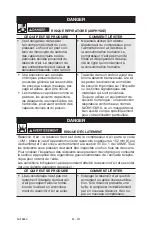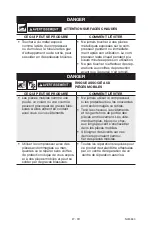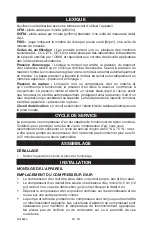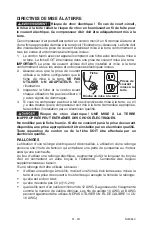
16- ENG
N015840
10. Apply sealant to the check valve threads. Reinstall the check valve (turn
clockwise).
11. Replace the pressure release tube. Tighten nut.
12. Replace the outlet tube and tighten nut.
13. Replace the shroud and air filter.
14. Perform the break-in procedure. See
Break-in Procedure in the
Operation
section.
TO REPLACE REGULATOR
1. Release all air pressure from air tank. See
To Drain Tank in the
Maintenance
section.
2. Set the Auto/Off lever to "Off" and unplug unit.
3. Remove the outlet pressure gauge and quick connect (if equipped) from the
regulator.
Outlet
Pressure
Gauge
Quick
Connect
Regulator
Regulator
Nipple
Arrow
Regulator
4. Remove the regulator.
5. Apply pipe sealant tape to the nipple.
6. Assemble the regulator and orient as shown.
NOTE: Arrow indicates flow of air. Make sure it is pointing in the direction of air
flow.
7. Reapply pipe sealant to outlet pressure gauge and quick connect.
8. Reassemble outlet pressure gauge and quick connect. Orient outlet pressure
gauge to read correctly. Tighten quick connect with wrench.
STORAGE
Before you store the air compressor, make sure you do the following:
1. Review the
Maintenance
section on the preceding pages and perform scheduled
maintenance as necessary.
2. Set the Auto/Off lever to "Off" and unplug unit.
3.
Risk of Flying Objects. Pull the regulator knob out and turn
counterclockwise to set the outlet pressure to zero when removing hose or
accessories to prevent hose backlash.
4. Remove the air tool or accessory.
5. Pull ring on safety valve allowing air to bleed from the tank until tank pressure is
approximately 20 psi. Release safety valve ring.
6. Drain water from air tank by opening drain valve on bottom of tank.
Risk of Bursting. Water will condense in the air tank. If not
drained, water will corrode and weaken the air tank causing a risk of air tank
rupture.
7. After the water has been drained, close the drain or drain valve.

